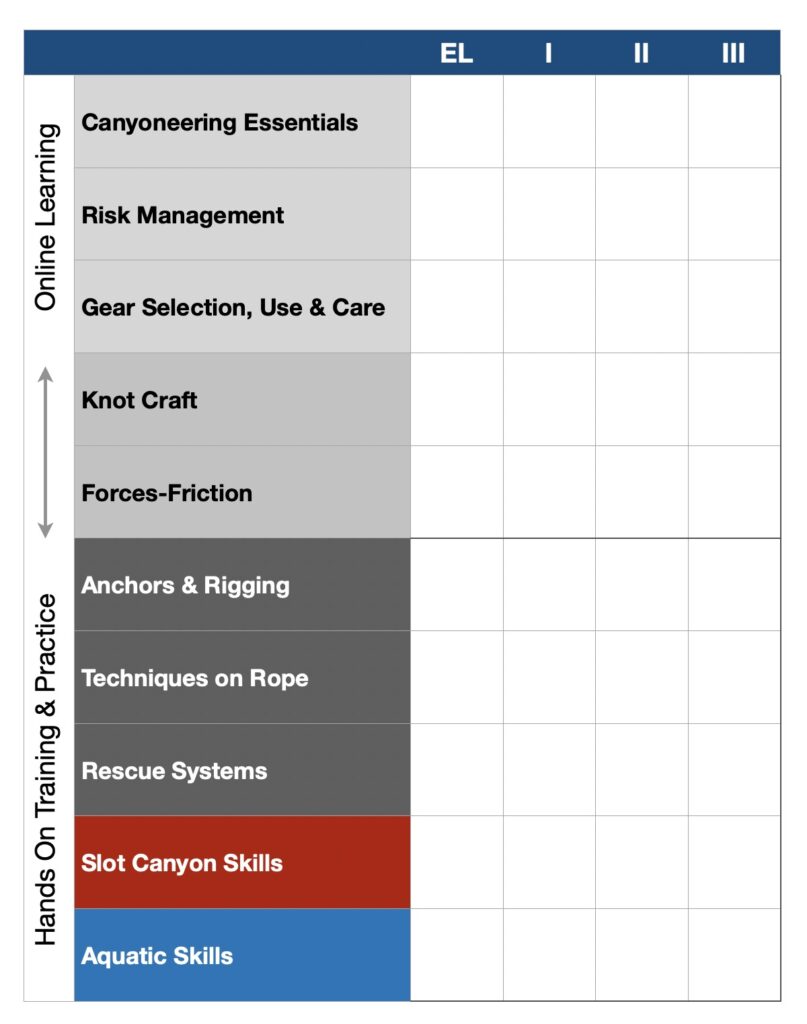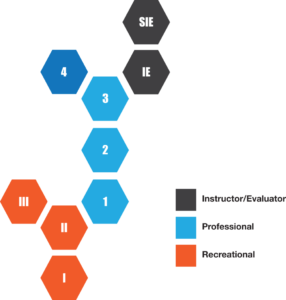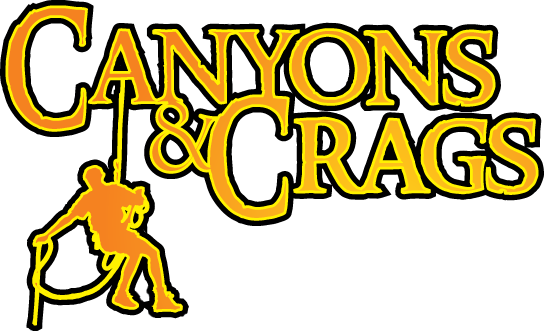Search by Keyword
1. Start
Progressive Learning
Start yourself on an efficient path toward your learning objectives by reviewing the Competencies Checklist. The Checklist presents a practical progression of competencies based on your expanding roles in a canyoneering team. From Entry Level Canyoneer through Canyon Leader, as your knowledge and skills increase, so do your contributions to your team.
Your Canyoneering Toolbox
Different problems and tasks require different tools; some basic, some specialized. Even if all problems were nails, did you know there are at least 50 different types of hammers?
We like the toolbox analogy for communicating the types of skills (tools) needed for canyoneering. This sport comes with diverse challenges that require a diverse set of tools. You will need more than one tool to be safe and efficient, but it is better to start with a basic set (one tool for each compartment in your toolbox), master those tools, then add more specialized tools as you gain experience and competence — and the need for more tools arises.
When your situation calls for a single rope releasable contingency system, you only need to know one, and the best choice will be the one that you learned well and have been practicing.
When you need to ascend a fixed rope, you only need to know one method that is efficient for you, using the gear you normally carry.
This principle forms the foundation of our competency progressions.
ART of Canyoneering Training Matrix
We understand that people acquire knowledge and skills from a variety of sources and that people learn at different paces. You may have one level of competence in Anchors & Rigging and a different level of competence in Techniques on Rope.
For this reason, our training is organized in modules that include online learning resources and hands-on training and practice. This approach allows you to participate in only the training modules you need without taking an entire course that covers material you already know.

Hands-On Learning
To supplement your self-guided online learning, we recommend you pursue progressive levels of hands-on training from instructors who are certified by Canyon Guides International (CGI). The CGI recreational canyoneeering curriculum follows a series of competency levels and represents the most comprehensive technical training available, designed to enhance safety, self-reliance, efficiency and enjoyment for canyoneers of all experience levels.

A note about levels ...
These levels assume an Entry Level course can be taught in two days, while other levels would require a three or four day course. It is common for some training organizations to offer their curriculums in a series of weekend courses to maximize participation. So you may need to complete more levels to learn the same amount of material. Ultimately, the number of days required remains roughly the same.
EL - Entry Level Canyoneering
An entry level canyoneer is expected to possess sufficient knowledge, skills and gear so that they are not a liability to a team in canyons (up to and including Class 3).
L1 - Technical Canyoneering
A Level I canyoneer is expected to possess sufficient anchor and rigging skills, along with appropriate gear, so they become a contributing member of a team descending easy to intermediate canyons (up to and including Class 3).
L2 - Advanced Canyoneering
A Level II canyoneer is expected to possess sufficient anchor and rigging skills, along with appropriate gear, so they become a contributing member of a team descending intermediate to advanced canyons (up to and including Class 4).
L3 - Canyon Leadership
A Level III canyoneer is expected to possess sufficient technical and group management skills, along with appropriate gear, to lead a team descending beginner to advanced canyons, including when things don’t go completely as planned.
As we acquire new knowledge and skills, we go through four stages of learning.
